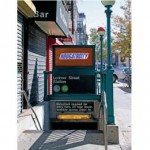Originally written June 30, 2007.
There’s always been a significant faction of foobar2000 users whose primary attraction to the player is its appearance, or rather the level of control given to its users over its appearance. In its infancy, with the standard (and still default) UI, very little was possible — the main window consisted solely of a tabbed playlist and several functional toolbars — but people nevertheless took a lot of pride in making it their own, and some impressive things were done with relatively minimal flexibility. It was in the standard UI that users began experimenting with album-level presentation, choosing not to repeat redundantly the artist and album name on each line of the playlist, but to use the second, third, and sometimes fourth lines to display other info, such as year, label, genre, replaygain info, etc. Each of these customizations was unquestionably unique, but most of the broad details of the interface were consistent and inescapable.
The Columns UI component began as an experiment in allowing for multiple columns within the playlist display, emulating the Windows Explorer “Detail” view (and many other Windows programs), with sortability via clickable column headings. Eventually Columns UI added a sidebar and, later, panels, allowing the whole foobar window to be split up indefinitely into panel-based component displays, the playlist viewer becoming just another one of these. This granted much greater flexibility, allowing users to tailor the interface even more precisely to their needs. You could now display album art as prominently as you wanted, or not at all; your entire library tree could be embedded within the main window, rather than tucked away in a pop-up; and with the trackinfo panel’s exceptionally lax (by that era’s standards) stylizations, the personalization of your foobar became even more addictive, and, more importantly, rewarding.
Many seemed hell-bent on concocting the most garish presentations imaginable: giant gothic blue-on-black custom fonts, deep-red 200-px-tall spectrum analyzers, all, of course, coupled with custom OS “vis.”
While some still preferred the purity and elegance of the standard UI, the personalizations made possible by Columns UI were inarguably functional ones, for the most part. Fonts, colors, distribution of panels, and a rudimentary method of text alignment were really as far as you could go. At the core of all the boasted screenshots was a recognizable structure, all slight variations on the theme of playlist+trackinfo+albumlist+albumart. Outside of displaying album art, there was nothing profoundly new that Columns UI allowed you to do — rather, Columns UI gave you more control over how you did what you needed to do.
Continue reading
 This word is used in Snickers’ new ad campaign, wherein they plaster these long, awkward neologisms (e.g., “Peanutopolis,” “Hungerectomy,” etc.) on buses and billboards and on their candy bar wrappers themselves.
This word is used in Snickers’ new ad campaign, wherein they plaster these long, awkward neologisms (e.g., “Peanutopolis,” “Hungerectomy,” etc.) on buses and billboards and on their candy bar wrappers themselves.




